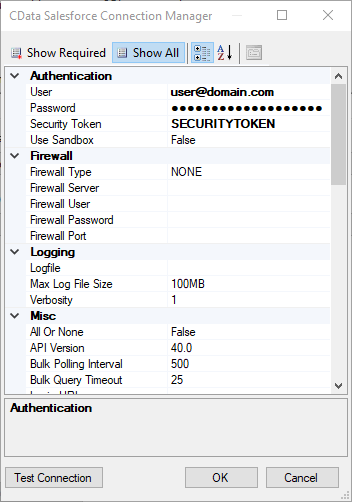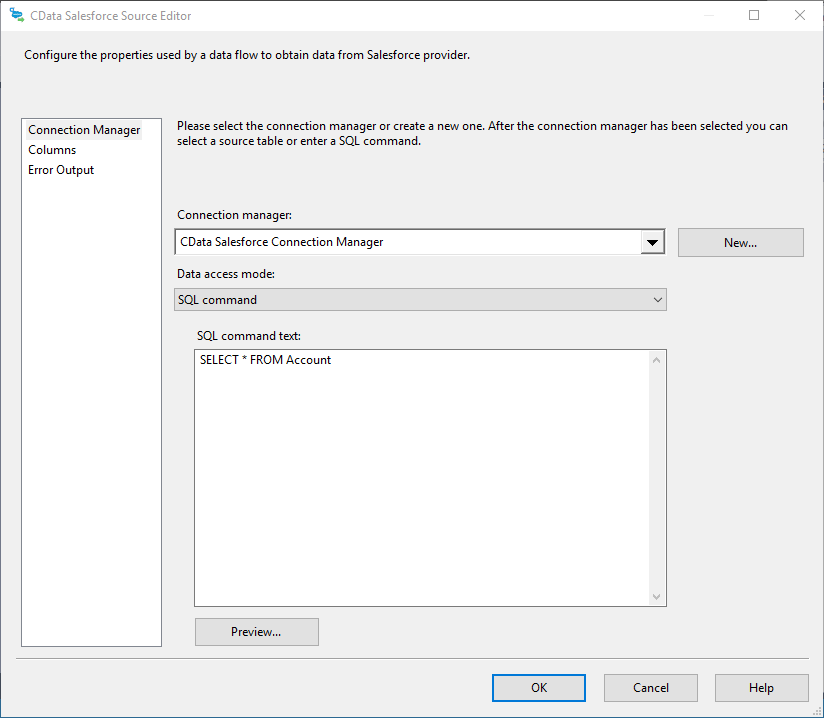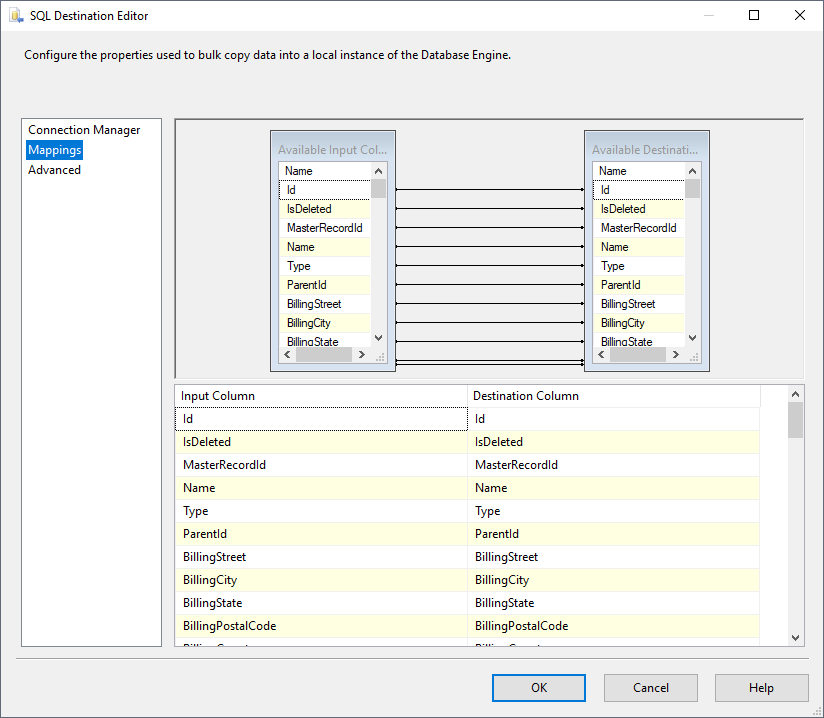Discover how a bimodal integration strategy can address the major data management challenges facing your organization today.
Get the Report →How to Import SAS Data Sets Data into SQL Server using SSIS
Easily back up SAS Data Sets data to SQL Server using the SSIS components for SAS Data Sets.
Using SQL Server as a backup for critical business data provides an essential safety net against loss. Backing up data to SQL Server enables business users to more easily connect that data with features like reporting, analytics, and more.
This example demonstrates how to use the CData SSIS Tasks for SAS Data Sets inside of a SQL Server SSIS workflow to transfer SAS Data Sets data into a Microsoft SQL Server database.
Add the Components
To get started, add a new SAS Data Sets source and SQL Server ADO.NET destination to a new data flow task.

Create a New Connection Manager
Follow the steps below to save SAS Data Sets connection properties in a connection manager.
- In the Connection Manager window, right-click and then click New Connection. The Add SSIS Connection Manager dialog is displayed.
- In the Connection Manager type menu, select SASDataSets. The CData SAS Data Sets Connection Manager is displayed.
- Configure connection properties.
Set the following connection properties to connect to your SAS DataSet files:
Connecting to Local Files
- Set the Connection Type to "Local." Local files support SELECT, INSERT, and DELETE commands.
- Set the URI to a folder containing SAS files, e.g. C:\PATH\TO\FOLDER\.
Connecting to Cloud-Hosted SAS DataSet Files
While the driver is capable of pulling data from SAS DataSet files hosted on a variety of cloud data stores, INSERT, UPDATE, and DELETE are not supported outside of local files in this driver.
Set the Connection Type to the service hosting your SAS DataSet files. A unique prefix at the beginning of the URI connection property is used to identify the cloud data store and the remainder of the path is a relative path to the desired folder (one table per file) or single file (a single table). For more information, refer to the Getting Started section of the Help documentation.
![Configuring a connection (Salesforce is shown).]()
Configure the SAS Data Sets Source
Follow the steps below to specify the query to be used to extract SAS Data Sets data.
- Double-click the SAS Data Sets source to open the source component editor.
- In the Connection Manager menu, select the connection manager previously created.
- Specify the query to use for the data extraction. For example:
SELECT name, borough FROM restaurants WHERE cuisine = 'American'![The SQL query to retrieve records. (Salesforce is shown.)]()
- Close the SAS Data Sets Source control and connect it to the ADO.NET Destination.
Configure the SQL Server Destination
Follow the steps below to specify the SQL server table to load the SAS Data Sets data into.
- Open the ADO.NET Destination and add a New Connection. Enter your server and database information here.
- In the Data access mode menu, select "table or view".
- In the Table Or View menu, select the table or view to populate.
- Configure any properties you wish to on the Mappings screen.
![The mappings from the SSIS source component to SQL Server. (Salesforce is shown.)]()
Run the Project
You can now run the project. After the SSIS Task has finished executing, your database will be populated with SAS Data Sets data.










